Sea Fury FB.11
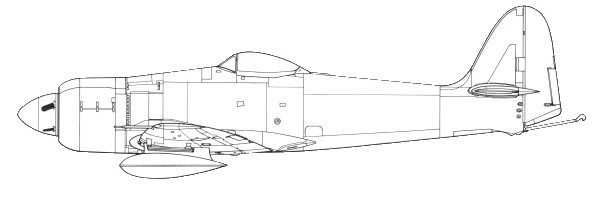
Sea Fury FB.11

Following the outbreak of the Korean War on 25 June 1950, Sea Furies were dispatched to the region as a part of the British Commonwealth Forces Korea, Britain's contribution to the United Nations multinational task force to assist South Korea following an invasion by North Korea. Sea Furies were flown throughout the conflict, primarily as ground-attack aircraft, from the Royal Navy light fleet carriers HMS Glory, HMS Theseus, HMS Ocean, and the Australian carrier HMAS Sydney. After a Fleet Air Arm Seafire was shot down by a United States Air Force Boeing B-29 Superfortress on 28 July 1950, all Commonwealth aircraft were painted with black and white Invasion stripes.
The first Sea Furies arrived in theater with 807 Naval Air Squadron embarked on HMS Theseus, which relieved HMS Triumph in October 1950. Operations on Theseus were intense, and the Sea Furies of 807 Squadron flew a total of 264 combat sorties in October. During a brief rest period at the Japanese port of Iwakuni the catapult was found to be excessively worn, necessitating the launch of Sea Furies with RATOG assistance until it was repaired. In December 1950, Sea Furies conducted several strikes on bridges, airfields, and railways to disrupt North Korean logistics, flying a further 332 sorties without incurring any losses. At this early point in the war little aerial resistance was encountered and the biggest threats were ground-based anti-aircraft fire or technical problems.
In addition to their ground attack role, Sea Furies also performed air patrols. In this role a total of 3,900 interceptions were carried out, although none of the intercepted aircraft turned out to be hostile. During the winter period, the Sea Furies were often called upon as spotter aircraft for UN artillery around Inchon, Wonsan, and Songiin. In April 1951, 804 Naval Air Squadron operating off HMS Glory, replaced 807 Squadron, which in turn was replaced by HMAS Sydney in September 1951 with 805 and 808 Squadron RAN. The Australian carrier air group flew 2,366 combat sorties. In January 1952, HMS Glory with 804 NAS returned to relieve Sydney following a refit in Australia. For the rest of the war Glory and Ocean relieved each other on duty.
In 1952, the first Chinese MiG-15 jet fighters appeared. On 8 August 1952, Lieutenant Peter "Hoagy" Carmichael, of 802 Squadron, flying Sea Fury WJ232 from HMS Ocean, shot a MiG-15 down, making him one of only a few pilots of a propeller-driven aircraft to shoot down a jet. The engagement occurred when a formation of Sea Furies and Fireflies was engaged by eight MiG-15s, during which one Firefly was badly damaged while the Sea Furies escaped unharmed. Some sources claim that this is the only successful engagement by a British pilot in a British aircraft during the Korean War, although a few sources claim a second MiG was downed or damaged in the same actionThe Kit
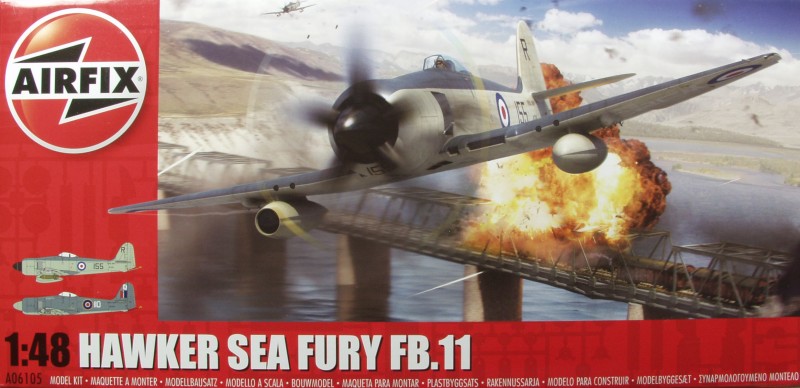
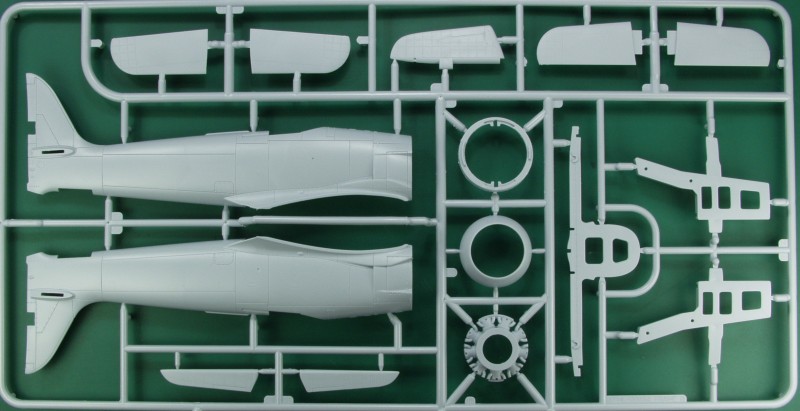
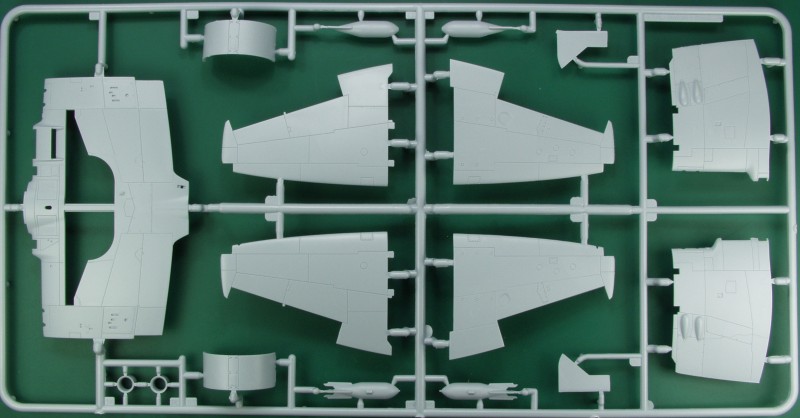
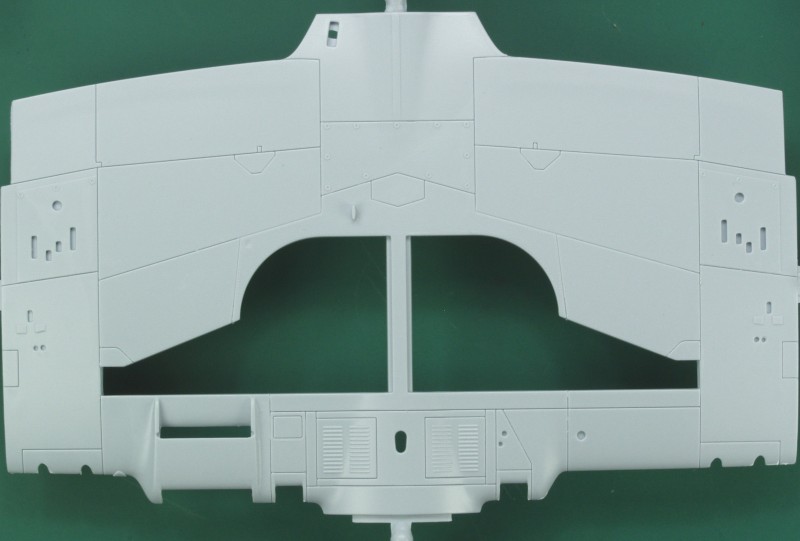
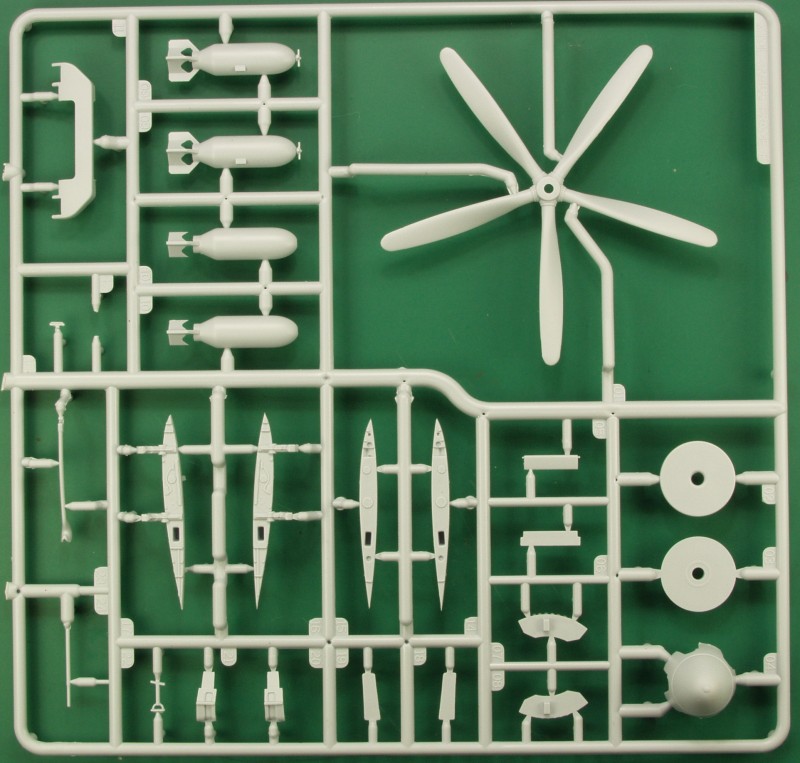
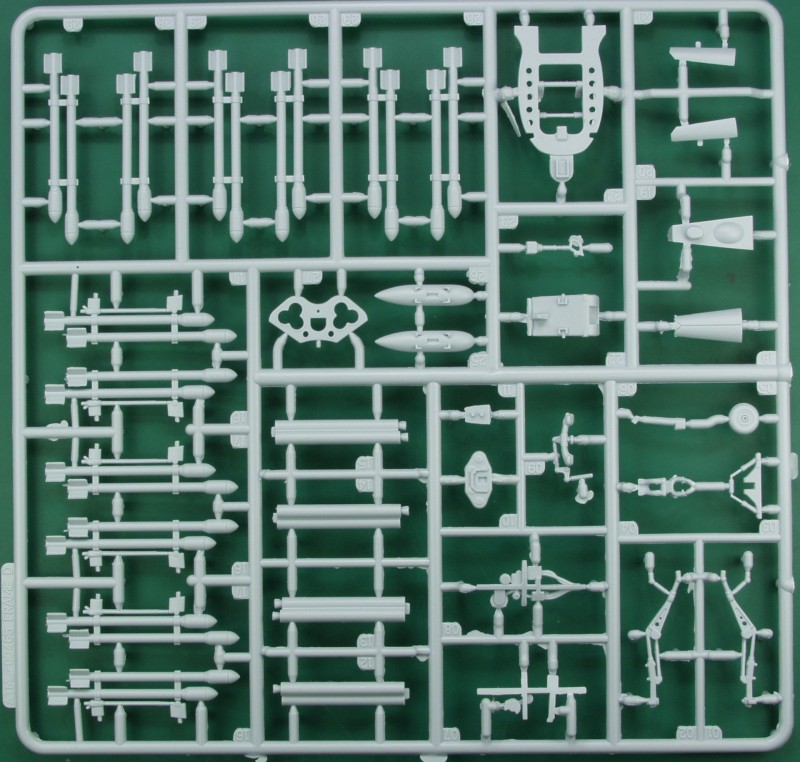
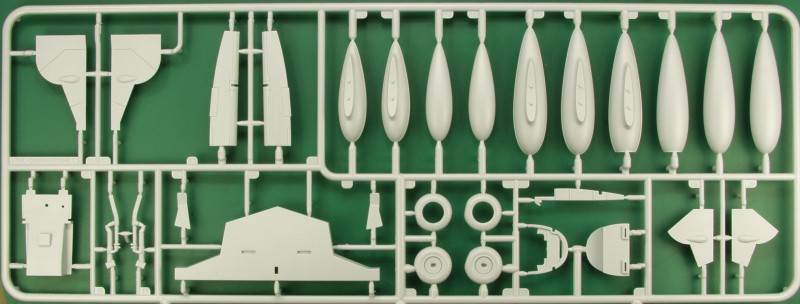
The
clear
parts are thin and clear but do have some optical distortion on
the curved parts. Other than the canopy there is a lens for the
camera pod and two wing tip lights.

The
decals are glossy in finish and in register. Most except for the
larger numbers and letters had a minimum amount of excess clear
film. There are a huge number of stencils provided. Markings are
provided for two aircraft; No.801 Naval air squadron, HMS Glory,
Korean War, 1952 and an aircraft restored in the markings of 802
Naval Air Squadron, Royal Naval Air Station Eglinton, Northern
Ireland, 1948. Operated by Roayl Naval Air Station Yeovilton,
Somerset, England, 2017.
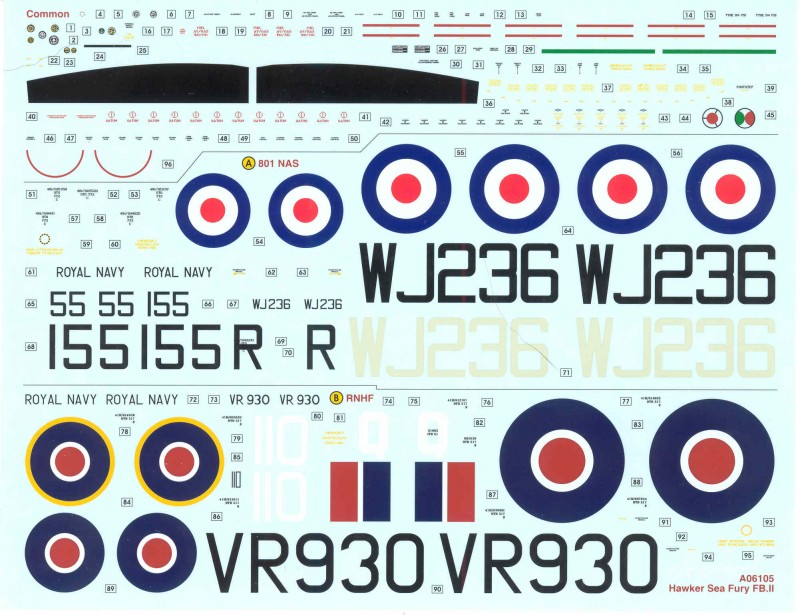
The
instructions are the standard new style, a 16 page
booklet stapled at the spine with cad style 3D
renderings in gray scale with red designating
parts to be added. The front page has multilingual
brief history and specifications. The second page
has multilingual
basic assembly instructions and an icon chart.
Assembly drawings start on page 3 and continue
through page 13 in 80 steps. A number of the steps
won't be needed depending on your choice of wings
folded or extended. Pages 14 and 15 have the
painting and markings diagrams in color and page
16 has a location diagram for placing the
stencils.
After
Market
Goodies
As
I mentioned in the kit description the kit
supplied cowling parts are fiddly to assemble and
not all correct. This set from Barracuda Studios
solves both of these issues plus provides some
nicer looking exhaust stacks. Part number is
BR48350.
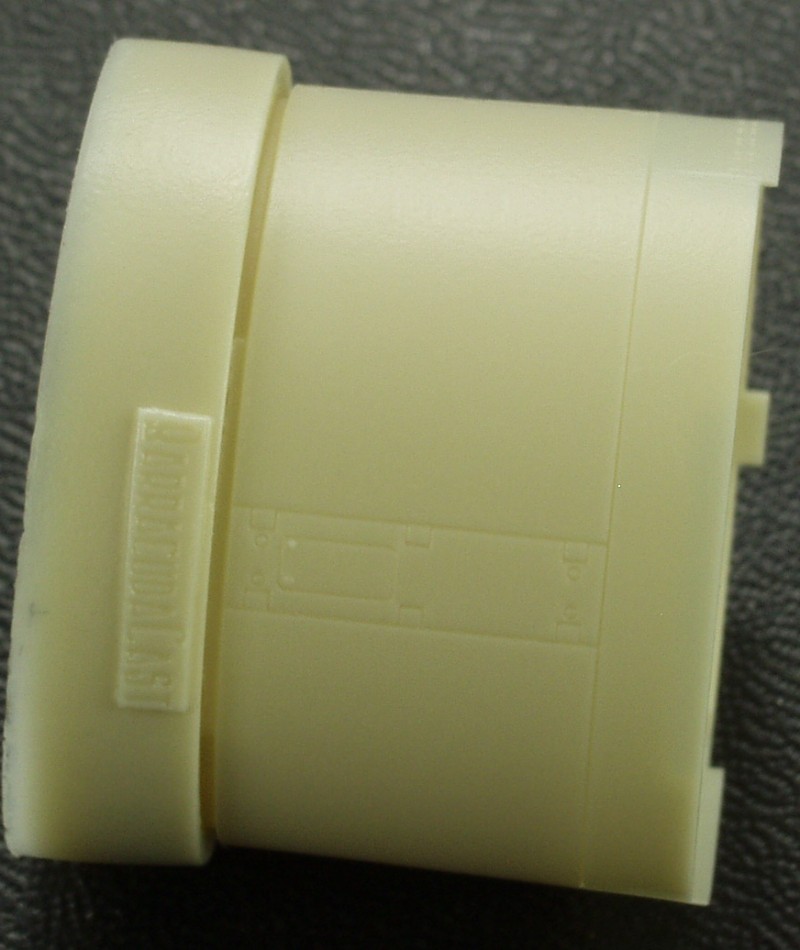
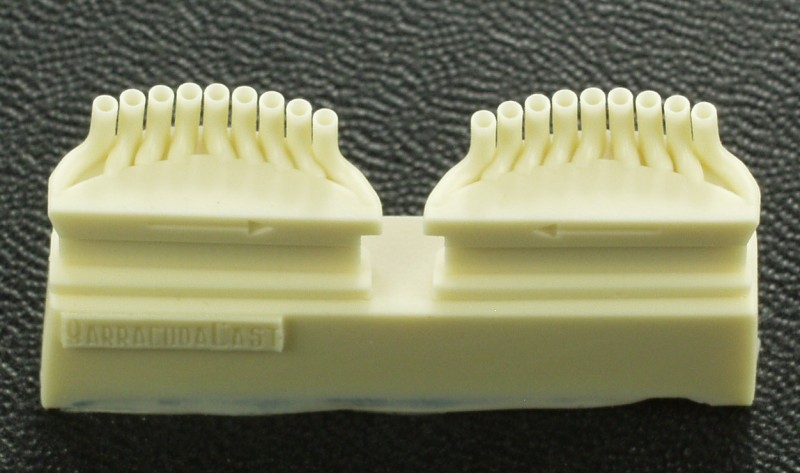
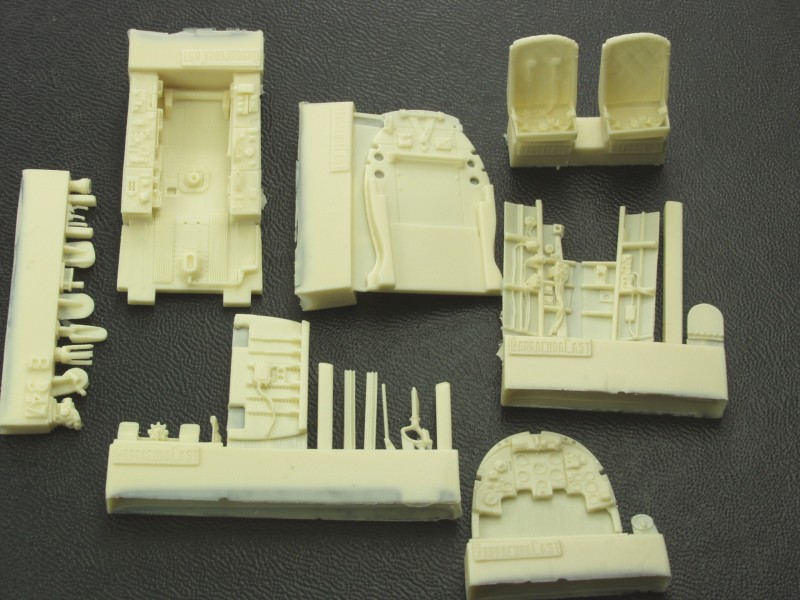
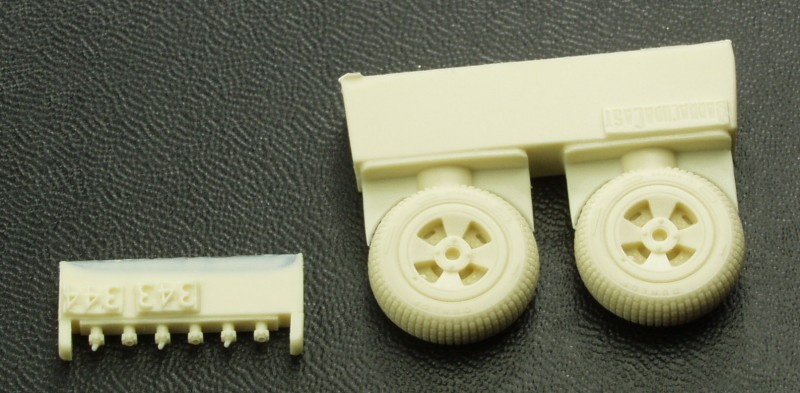
Conclusions
This is another winner from the new Airfix and is certainly the best Sea
Fury in this scale. The kits short comings should not be that hard to
deal with by modelers with a moderate amount of experience. Recommended
!
Links
to kit build or reviews
A build review can be found here
and another in box review here.
References
Hawker Sea Fury in Action by Ron Mackay and Wikipedia
Back to the Misc 1/48 British page